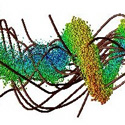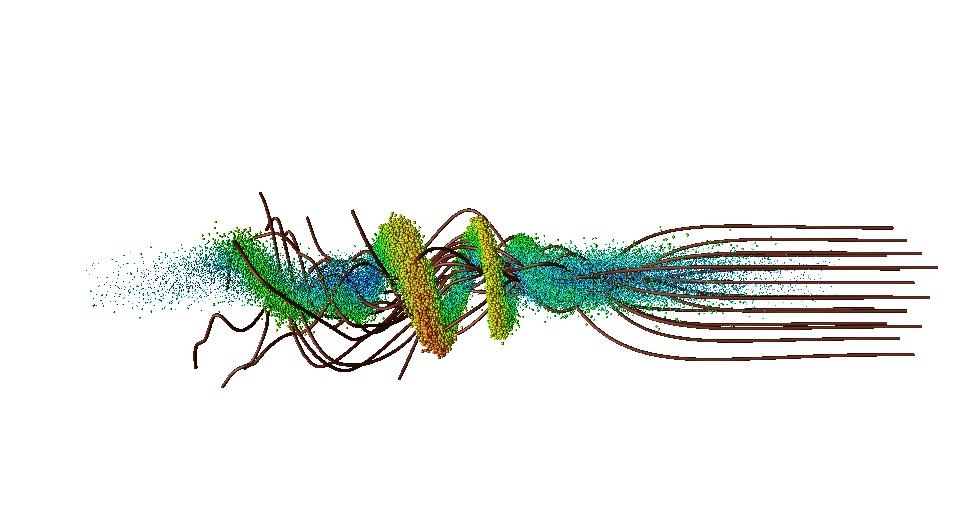Faster Crunching Thanks to Einstein
Relativity theory insists that no matter what speed you choose for your spaceship–snail-like or close to light speed–the laws of physics always look the same. Yet in the 30 March Physical Review Letters, a theorist reports that the complexity of physics calculations is not the same at all speeds. Merely imagining particle interactions from a speeding spaceship’s point-of-view could dramatically accelerate computer calculations, especially for phenomena involving particles moving close to light speed. The discovery of such a simple but unnoticed effect of relativity theory is surprising to many researchers, in part because the theory is so well-studied.
Researchers studying strongly relativistic physics–the interaction of high-energy particle beams, for example, or the passage of intense laser pulses through matter–routinely rely on computer simulations to follow the complex dynamics. These simulations chop a system into many small parts, and calculate what happens to those parts through a sequence of steps in time. For accuracy, the discrete parts and time steps must be smaller than the finest details important to the physics. For example, for a dense beam of protons passing at nearly the speed of light through a cloud of electrons, the program must cut up the system into pieces smaller than 10 centimeters across, which is the typical length of a “pulse” of protons in an accelerator. But the program must also calculate results on the scale of the accelerator length, perhaps 5 kilometers.
As a result, the number of computational steps required to simulate a problem grows not only with its overall size and duration, but also with the fineness of its details; it depends on the full range of scales involved, from small to large. If the laws of physics don’t change with the speed–or “reference frame”–of the observer, you might think that the range of scales shouldn’t change either. But a simple calculation shows otherwise, according to Jean-Luc Vay of the Lawrence Berkeley National Laboratory in California.
Vay imagined two objects that interact as they pass by one another at relativistic speeds. Each object has a certain overall length and also a certain size for its finest details. Relativity theory says that an observer in a different reference frame would see these scales altered by relativistic length contraction and time dilation. Vay calculated that the overall range of scales would change too, and potentially quite dramatically for the most high-speed interactions. Moreover, there’s always an optimal frame in which the range becomes smallest. He says that researchers may be able to speed up some of their calculations immensely, merely by recasting them in the best frame of reference.
For the proton beam example, Vay found that the calculation in the optimal frame required about 5000 time steps, compared to more than five million in a frame fixed on the electron cloud. On the computer he used, the former calculation finished in less than 30 minutes, while the latter ran for over a week. For other simulations involving the intense interaction of laser light with matter, as in free-electron lasers, Vay says the simulation speed may be improved by a million times or more. “This comes as a surprise to most physicists,” says Vay. “Most feel that the complexity of a system should be invariant” as viewed from different reference frames.
“This is a remarkable observation,” says plasma physicist Alex Friedman of the Lawrence Livermore National Laboratory in California, “especially in view of the number of years that have passed since special relativity was developed. I think it will make a big difference for lots of practical simulations.”
–Mark Buchanan
Mark Buchanan is a freelance science writer who splits his time between Abergavenny, UK, and Notre Dame de Courson, France.





